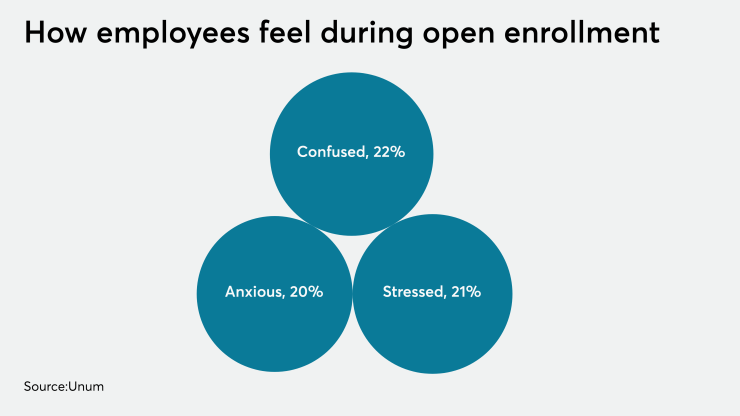This is the year everything changed for HR and benefits professionals. The way we communicate, operate, recruit and motivate teams has all shifted to a virtual model. COVID-19 has forced a transformation in the function of HR and benefits, and has shed a light on the need for more agile communications.
As we approach open enrollment season, now is the time to reimagine your process and ensure you have the tools in place to communicate clearly.
Planning your open enrollment strategy
Start with a clear understanding of the benefits your team needs now, vs. last year. A quick survey can help you prioritize your actions. Are you featuring new benefits or PTO policies for caregivers? Are you adding new HSA or FSA plans or increasing wellness benefits to improve the mental health of your employees? Once you understand the needs of your organization you can prioritize communications for plan benefits accordingly.
Next take a look at the important dates you need to communicate around. When will plan information be finalized? When will you make it available? What is the deadline for enrollment? Once you know key dates you can create a timeline for content deliverables. The plan should be built out several weeks prior to your first communication and, ideally, months prior to your open enrollment deadlines.
Creating the content
One area HR and benefits professionals consistently struggle with is marketing and creating informational content around the benefits they provide. Due to limited resources HR teams rely on benefits brokers to supply hard copy or PDF documents to distribute and review with employees during in-person meetings. PowerPoints are also commonplace but these tools won’t replace the in-person meetings HR professionals can't hold with remote workforces.
HR and benefits professionals will need to re-think the traditional content mix and distribution channels. Does the current content work for remote workers, can everyone access the portal, shared folders or emails you plan to use to distribute the information? Are you offering it in multiple languages? Will you use video in your communications plan? According to Forrester Research, employees are 75% more likely to watch a video than read documents, emails or web articles. If you do plan to add video, how will you keep it on brand? What supporting content will you share along with it to ensure they take the desired action? An interactive digital postcard with embedded video is an effective way to distribute related content and increase engagement and action. These digital options are more practical for reaching time-strapped workforces and can be easily shared among family members, on any device.
Distribution
Time is everything today. Attention spans are shorter, distractions are at an all-time high and ensuring your most important communications are acted upon has to be top of mind. By creating a distribution plan for each piece of content you intend to share, you can be sure it is viewed and engaged with by the most people. Email, websites, QR codes, webinars, social media, interactive message boards, virtual meetings, video conferences, mailers, etc. All of these options can be combined to create the right flow of critical information around open enrollment. More and more people prefer texting for urgent communications, and that includes in the workplace.
Measuring results
As with any good communication strategy, be sure to track, measure, analyze and solicit feedback. Find out how you're doing and where you can improve. Use key performance indicators (KPIs) such as viewer-engagement tracking, video-viewing stats, clicks per view, average time on content. You can even measure engagement by type of device and geographic detail. All of these results will show where you are doing well and where there is room for improvement.
A more effective digital communications plan for benefits can help increase employee retention, engagement, save money (vs. print materials and in-person meetings) and give HR and benefit provider resources a needed break from repetitive calls and emails.






